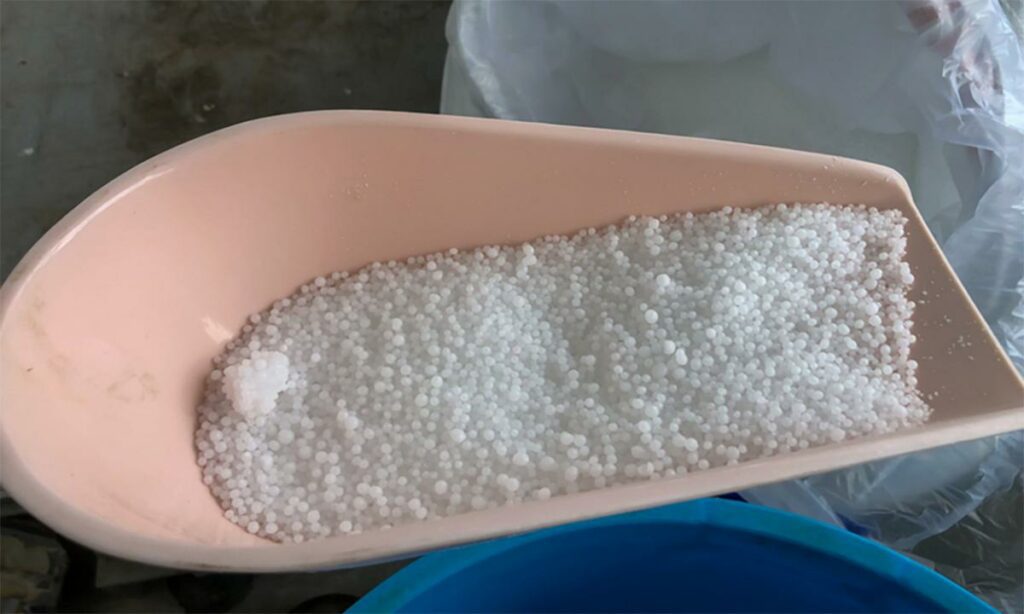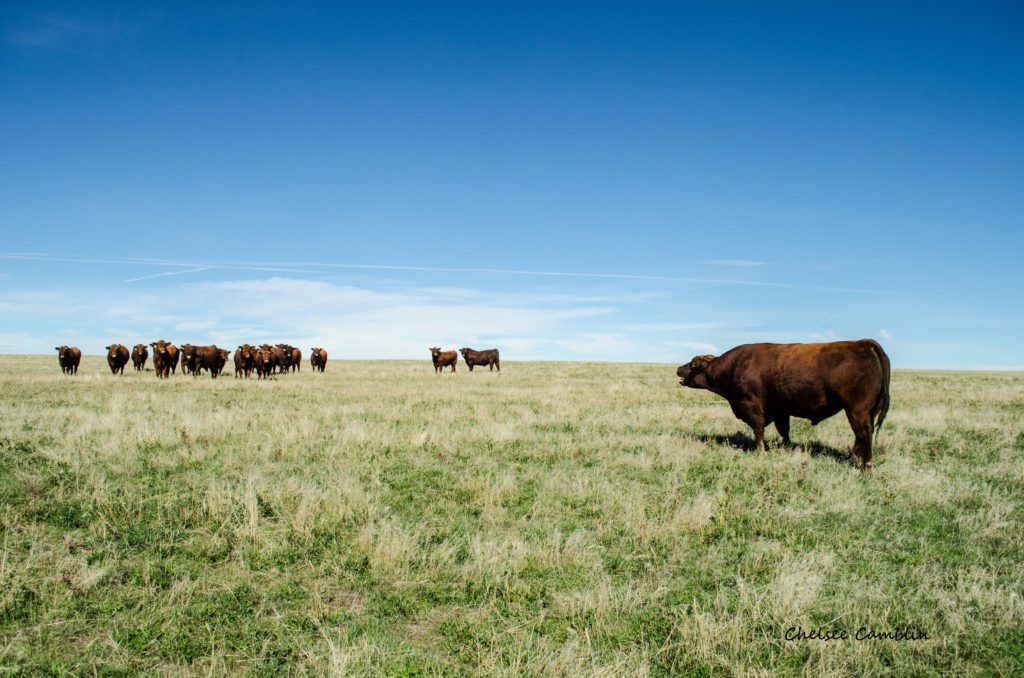Introduction
In beef cattle nutrition, it is imperative to consider and understand how protein is utilized and the various sources that are available. Non-protein nitrogen (abbreviated as NPN) is a source of nitrogen that does not contain amino acids like “true proteins” do. Given that enough energy is available within the diet, NPN can be utilized by the rumen microbes found in the stomachs of cattle to build proteins necessary for growth, maintenance, and production. Urea is commonly used as a NPN source in beef cattle diets.
While urea does not contain any other nutrients, such as energy, vitamins, or minerals, it has its place in beef cattle nutrition. The rumen degradable protein percentage of a diet is increased by the addition of urea. When compared to a natural protein source, such as soybean meal or dried distiller’s grains with soubles, urea may be less expensive per-unit of crude protein. Urea is best utilized within high-grain diets as energy is readily available to the rumen microbes. Forage diets are digested slower, thus, leading to less-efficient use of urea by the microbes.
Urea Poisoning or Toxicity
Urea should be used with caution, and inclusion levels should be monitored carefully to prevent urea toxicity. When urea enters the rumen environment, it is quickly turned into ammonia. If proper energy sources are available this is not an issue, as the rumen microbes utilize ammonia to create/produce proteins, with little excess ammonia entering the bloodstream. When energy sources are in low supply, or urea is overconsumed, large amounts of ammonia enter the bloodstream. These levels can surpass the liver’s removal rate, which may lead to urea poisoning in under 30 minutes. Uneasiness, tremors, excessive salivation, rapid breathing, incoordination, bloat and tetany are common symptoms of urea toxicity. The good news is that urea poisoning can be avoided by ensuring proper mixing of urea within feed or supplements, correct use and amounts, and education regarding urea use in cattle diets. Additionally, raw, whole soybeans should never be fed in combination with urea due to an enzyme contained within the bean, urease, that quickly breaks down urea into ammonia, leading to high circulating ammonia levels. Cattle grazing soybean stubble should not be supplemented with NPN protein sources due to the potential for ammonia poisoning.
Recommendations for Urea Feeding
Urea should not be added to diets for calves less than 400 pounds or 120 days of age. This is due to their rumen not being fully functional yet. Feeder cattle should be started on diets with minimal amounts of supplemental urea. Starting diets should rely primarily on true protein sources, such as plant proteins, and adapted slowly to urea-containing rations 30 days after the start of feeding. Ruminally undegradable protein sources complement urea use within rations, as this protein can bypass digestion from the rumen microbes and can be used by the animal. No more than one-third of the diet’s crude protein content should come from urea to maximize rumen microbe function and animal performance.
The Bottom Line
Urea is an example of a NPN source that can be utilized within beef cattle diets. High-energy diets benefit most from urea use, as microbes have sufficient levels of energy to utilize the nitrogen provided. Ammonia toxicity is a concern with urea inclusion; however, with proper dosage, use, and mixing techniques, this can be avoided.
SOURCE: South Dakota State University Extension, Madison Kovarna – SDSU Extension Beef Nutrition Field Specialist. Additional Authors: Sydney Vanderhoff
PHOTO: Canva









